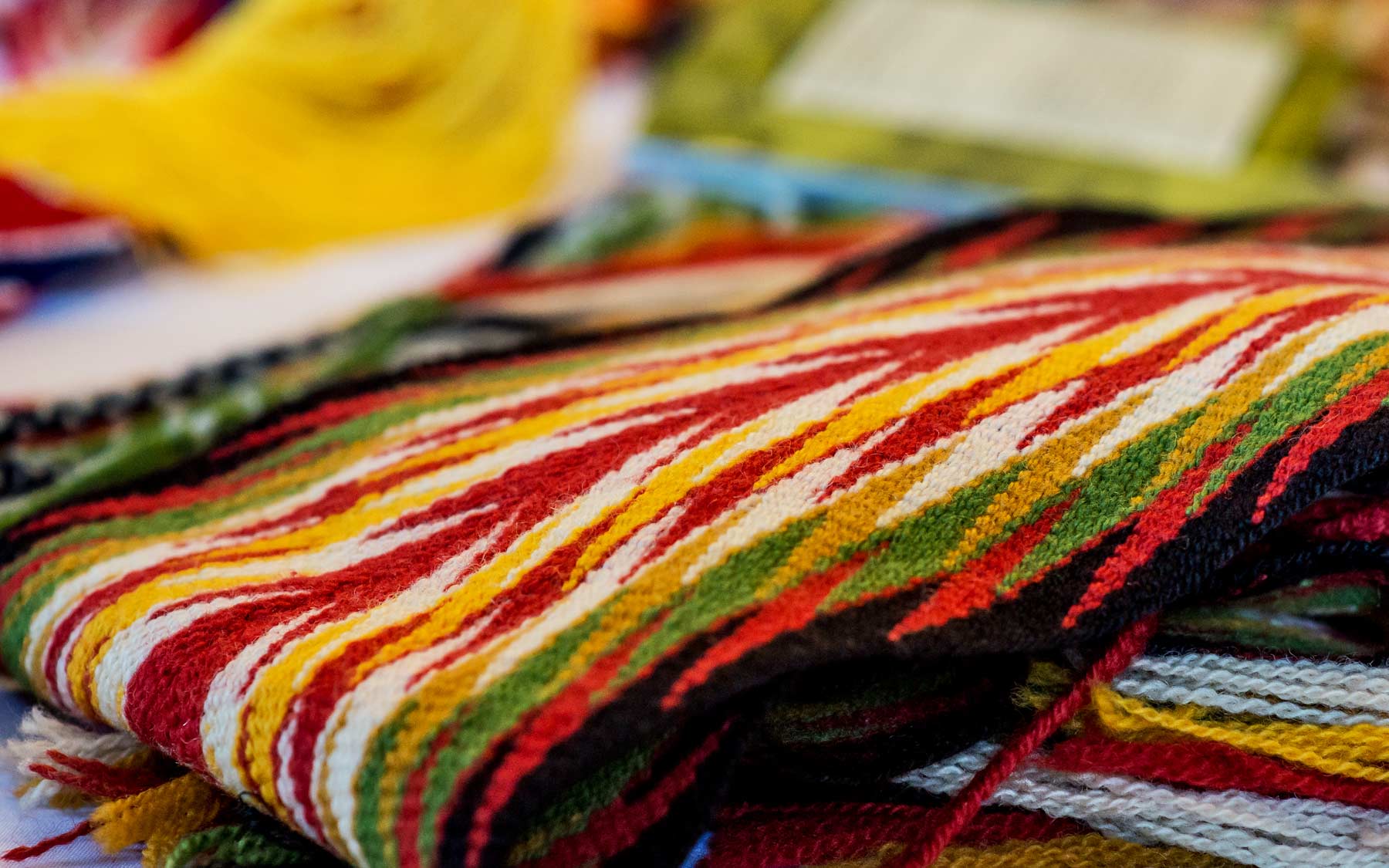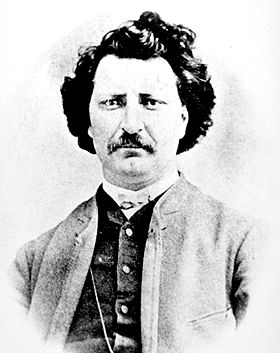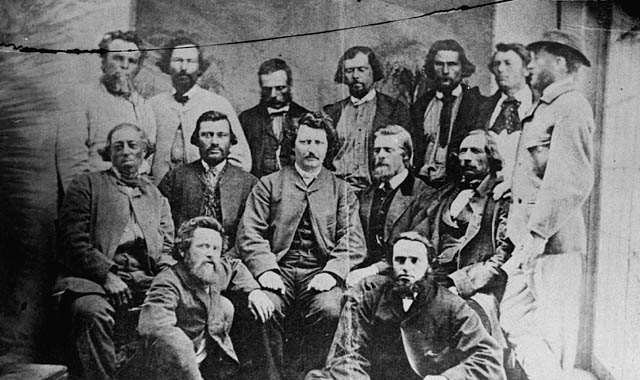In the interest of promoting a better understanding of the complex issue of Métis identity and how it is defined, The Canadian Encyclopedia has commissioned two opinion pieces exploring different perspectives on the topic. This article explores Métis identity from the perspective of Métis with ancestral ties to the Red River Settlement.
For another perspective on Métis identity, see The "Other" Métis.

When we discuss Métis identity, the conventional logic is that we are a mixed people born of Indigenous contact with Europeans. It is said that the children of these mixed unions regularly formed distinct communities across the continent and these communities thrived for some time. While some communities persisted openly, most notably on the northern Plains, many went “underground,” in hiding. Even if the historical evidence for the existence of longstanding Métis communities outside of the West is sparse, the belief in “many Métis everywhere” remains commonplace. These “hidden Métis” are now a topic of conversation as the descendants of “hidden communities” identify themselves as Métis (see The "Other" Métis).
While this narrative holds true in a northern Plains context, the number and frequency of this phenomenon is generally overstated. Mixed unions certainly occurred in many places throughout what is now Canada, but only rarely did they result in the formation of distinct new communities. The children of most mixed unions found places in either of their parents’ communities (or sometimes in both). These people were not always viewed as something different from their peers.
Today, however, from the Maritimes to the Pacific, individuals are envisioning Métis communities in unexpected places. However, they all lack substantial evidence of distinct and enduring post-contact Indigenous communities, let alone historical evidence that they self-identified as Métis. While ample evidence of mixed unions can be offered up as proof, as is often said, “mixed ancestry does not a Métis make.”
In other words, the supposed development of these multiple Métis communities implies that Métis could — and did — emerge anywhere. Therefore, our creation as a people is due not to particular times, places, historical circumstances and human decisions, but as a kind of historical process that sprang to life wherever there was a mixing of Indigenous and European blood. In this sense, Métis are not often treated as a people with a history akin to other Indigenous peoples, but instead as a historical process.
This offensive belief requires a kind of historical determinism (the presumption that history has an inevitable outcome) where despite vastly different geographic, social and political contexts, and different Indigenous peoples with profoundly different cultures, a remarkably similar kind of community with the same cultural and social forms somehow emerged. A re-imagination of Métis emergence as a historical process that occurred everywhere and anywhere goes against generations of Métis political thought, political organizing and self-governance — all of which was structured around a self-aware political community situated on the Prairies, the Métis Nation, and not in mixedness and historical determinism.
Pushing back against this historical determinism, in what follows, I make three distinct arguments:
- That Métis are not defined by our mixedness, but by our collective history;
- That Métis already understand our origins are in the West, and that we do not need other explanations of where we come from;
- That Métis already have an agreed-upon definition of who we are, and that others should be respectful of this definition.
Métis Are More Than Just Mixed
Let’s not overstate Métis mixedness. As my colleague Chris Andersen argues in his book on Métis identity, “Métis”: Race, Recognition and the Struggle for Indigenous Peoplehood (2014), every Indigenous people is culturally and biologically mixed. One could go further and argue that every human society is mixed as well. So the idea that mixed unions necessarily resulted in the formation of new peoples ignores the already existent Indigenous legal orders which managed kinship, belonging and identity. Many Indigenous peoples incorporated outsiders, and many European fur traders married into Indigenous families without any Métis in sight. And, just as importantly, many settler communities incorporated the children of such unions into their cultural fabric on a permanent basis, too.
The reason for this situation is that contemporary and historical observers tend to place more value on today’s hard-and-fast racial designations than the communities they were documenting ever did. This means that “métis” and “halfbreeds” have long been “found” where none existed. They were often unproblematic members of Indigenous communities who were placed into an artificial classification system based on “race,” a social construct that didn’t necessarily exist in Indigenous understandings of the day. Today, then, one can track down thousands of Indigenous-European marriages from the earliest genealogical records kept by the Catholic Church and track their descendants into the present. One can also find examples of these marriages all across the territories now claimed by Canada. This should shock no one, as love often transcends culture and “race,” and, in eras where Indigenous peoples remained politically ascendant, such marriages were also politically advantageous. Alliances were built out of mixed marriages, and this was true long before European peoples arrived.
Narratives that find multiple Métis peoples privilege structure over agency. In other words, it is the act of biological mixing, not the actual choices of the people involved, that led to the creation of Métis communities. And so, it is said, that Métis communities emerged spontaneously all over the northern part of North America, and with a remarkably similar set of experiences. Wherever the Métis community is found, they all seem to wear sashes, canoed as part of fur trade boat brigades (even in places without brigades), hunted buffalo (even in places without herds), jigged to fiddle music and spoke a mixed language called Michif (even in regions without Cree). What is particularly impressive is that these cultural features are shared over vast distances, usually with little historical contact between them. Yet such narratives are not about real-live people, but the historical process of mixing. In this way Métis aren’t a people, we are a historically determined structure.
Métis Already Have an Origin Story
Historical determinism does not give Métis individuals a whole lot of credit. The culture they built, the language they created, the songs they sang and the lives they lived are invariably human. Historical Métis were real human beings who had choice in the matter, and who created a political and social entity on their own accord. While historical events surely drove much of this process, its outcome was never assured. It still isn’t. We continue to stare down the destruction of our language, culture and life in an assimilatory Canada that denies the independent political existence of Indigenous peoples.
The stories we tell about our origins are the history of who we are. Like all Indigenous peoples, we’re place-based. Our culture and political system reflects that. Métis could not have emerged elsewhere, since we required the extensive buffalo herds to formulate a buffalo-hunt system of governance. Our culture and language was Prairie-centred, influenced deeply by the Cree, Saulteaux and Assiniboine, with whom we shared vast hunting grounds.
We tell stories of the Battle of Seven Oaks, our conflicts with the Hudson’s Bay Company, the Sayer Trial, the resistances at Red River and on the South Saskatchewan. Our history is that of buffalo hunts, of military victories and the suffering after our many dispersals. We have stories of great 19th century leaders: Cuthbert Grant, Baptiste Wilkie, Gabriel Dumont and, of course, Louis Riel. In the 20th century, Métis political leadership built new organizations to represent Métis interests in Western Canada — leading to the formation of the Métis National Council in 1983. Métis art and culture has also seen a renaissance since the 1970s, a time where it is said we began to reemerge, to quote Riel, “after 100 years of sleep.”
In all of this, our origins are traced to the Prairies and the lands of great buffalo herds. We don’t tell stories about our emigration from Québec or the Maritimes: our origins are in the West. While some of our ancestors may have come from such places, the communities in the West made them Métis, as they adopted the distinctly Métis culture and politics upon arriving there. This history is integral to who we are, and it is definitive of the Métis experience. If such a process occurred outside of this Prairie nexus, it would not look the same, and the people that would have emerged would have been totally different. They also would have, in all likelihood, adopted a new and different name for themselves, and thus would not have been “Métis.”
Métis Are a People and We Know Who We Are
As many individuals discover Indigenous ancestors in their family tree, there has been an outgrowth of self-identified “Métis” organizations without linkages to the people and history I’ve described. Yet, they attempt to claim a Métis identity for themselves, based on the logic that Métis exist anywhere mixed unions can be found. However, Métis have already produced a definition of who we are, one developed through extensive discussion by Métis knowledge-holders and intellectuals for the Métis National Council. In practice, this definition is widely accepted by the Métis Nation’s political organizations, the federal and provincial governments, First Nations and, most importantly, among Métis people. The definition is as follows:
“Métis” means a person who self-identifies as Métis, is distinct from other Aboriginal peoples, is of historic Métis Nation Ancestry and who is accepted by the Métis Nation.
This short definition is actually quite complex and so it’s useful to unpack it a bit more. First, it requires that one self-identify as Métis. Self-identification as Métis means that an individual must understand themselves as Métis and openly acknowledge their “Métis-ness.” This is easy and widespread, although more people claim to be Métis than are claimed by the Métis people. Second, that Métis are distinct from other Indigenous peoples means Métis are not Métis based on our descent from other Indigenous peoples, but are an Indigenous people in our own right. Historically speaking, this meant that other Indigenous peoples recognized us as Indigenous, formed alliances with us and, on several occasions, asked the Crown to include us in treaties. Third, being Métis involves descent from the “historic Métis Nation,” which is the Métis people of the historic North-West, who originated in the Red River Valley, but have since expanded outwards. Historical Métis communities are found across the Prairies into northeastern British Columbia, the Northwest Territories and northwestern Ontario. This territory was shared with our Indigenous relatives and allies (Métis have also migrated from these places further afield, although usually as visitors in the territories of others). Fourth, to be considered Métis, one must be accepted by the contemporary Métis Nation. This means that beyond self-identification and ancestry, being claimed by the Métis Nation is integral to being Métis, as it is with any other Indigenous people.
The Métis Nation, as an Indigenous nation, uses this definition to determine who we are, an integral part of our self-determination. The Métis people continue to possess a legal order that the Government of Canada has tried, always unsuccessfully, to bring completely under its control. Therefore, as Métis, we are the only ones who are able to determine our boundaries because we are the ones responsible for maintaining kinship ties and protecting the integrity of our nation. This is the most basic component of self-governance, and something that non-Métis should respect.
It is therefore important not to confuse mixed marriages with Métis families. Mixed marriage was quite common — particularly in the small founding population of Québec — and a lot of people have Indigenous ancestors in their genealogy. But, since Métis are not a just a byproduct of a historical process, but emerged from a particular place and from the choices of particular people, genealogy is only one component of who we are. Being Métis means being descended from Métis, not simply having an Indigenous ancestor.
Genealogy certainly matters, but only if it can be transformed into kinship. By which I mean, Métis people are Métis by virtue of their relationship to other Métis people. This means real, lived and longstanding relationships with living Métis people is a key part of who we are — this is the contemporary acceptance requirement of the Métis National Council definition. Being Métis means being claimed by the Métis people, not just claiming them. In this sense, genealogy only goes so far, it can never stand in for the real relations of community and family. (We must also be wary of colonial disruption, as many Métis have been adopted out, separated from their communities or otherwise pushed out of the kinship networks that once were the core of their existence as Métis people). The remedy for disconnection is reconnection, a return to the people. It’s not to dwell in genealogy, to hold oft-distant ancestors up, as if they determine identity more than living communities. Métis communities manage kinship and knowing one’s genealogy is only the start of that process of living as kin.
If we are to respect Métis self-determination, we must respect that Métis communities have long been saying these things, and we are well aware of who we are and where we came from. We must respect the particularities of this history, the choices that were made and the people who made them. If Canadians are serious about reconciliation, they have a particular responsibility to amplify Métis voices in this matter, to listen to what we are saying and work alongside Métis to restore our people to a self-determining status once again. At the very core of this struggle is the ability to define who we are. And who we are is not a historical process, but a people, as alive today as we ever were.
Adam Gaudry, PhD, is Métis and currently an assistant professor in the Department of Indigenous Studies at the University of Saskatchewan. Beginning 1 July 2016, he will be joining the Faculty of Native Studies and Department of Political Science at the University of Alberta.

 Share on Facebook
Share on Facebook Share on X
Share on X Share by Email
Share by Email Share on Google Classroom
Share on Google Classroom




